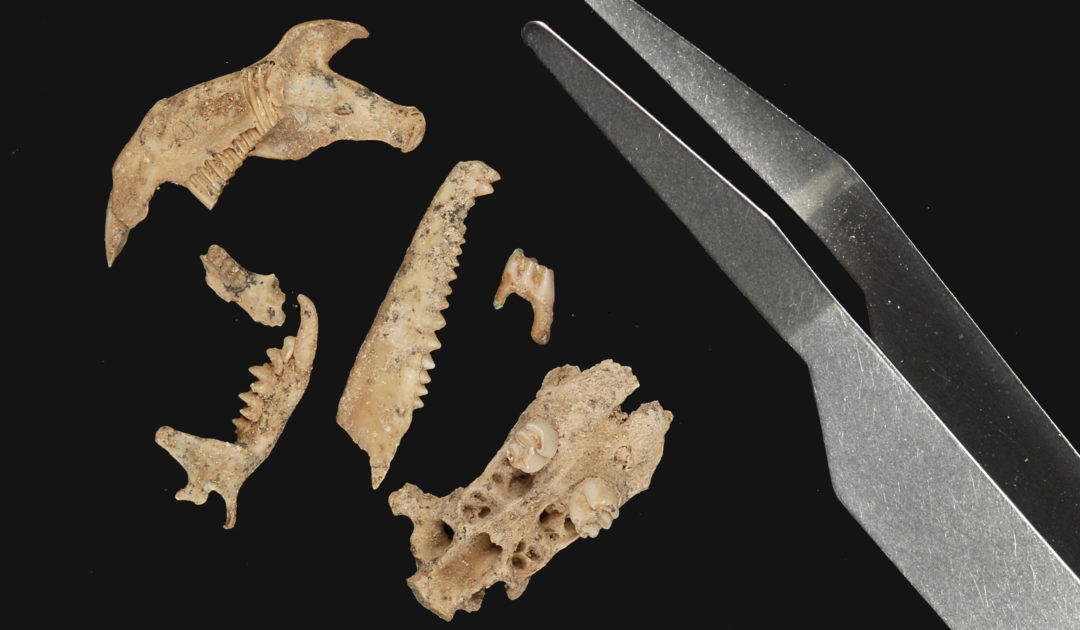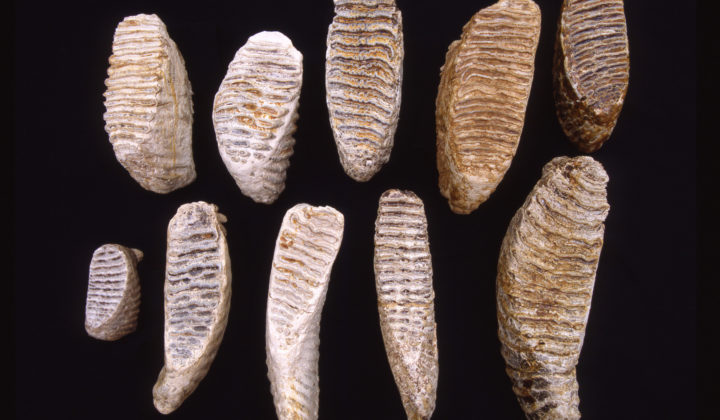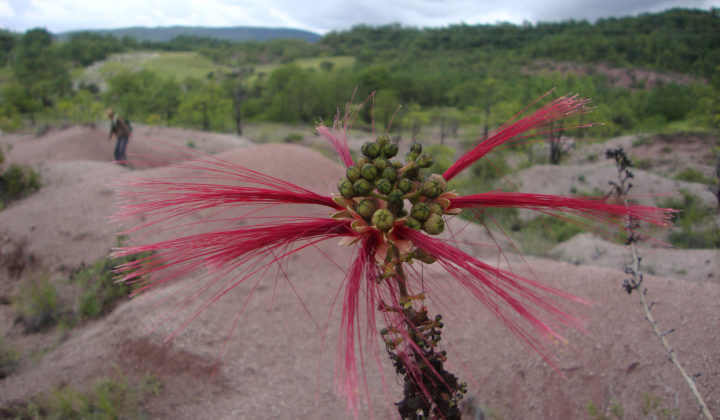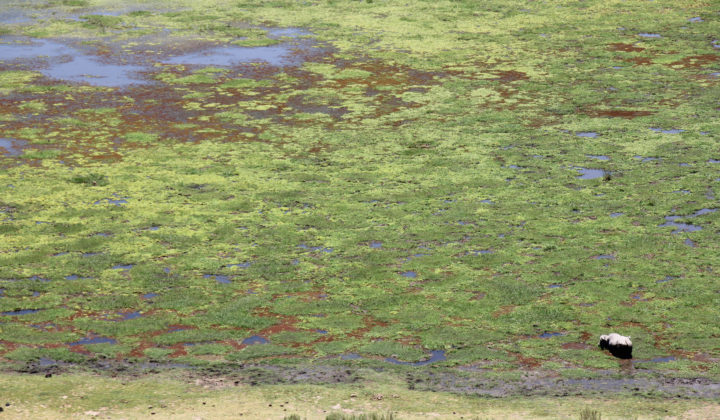
Evolution eurasischer Kleinsäugerassoziationen
Im Rahmen der komplexen Bearbeitung der Fundstelle Untermaßfeld (Südthüringen, Mitteldeutschland) (s. Epivillafranchium von Untermaßfeld) werden die Kleinsäugerreste und die von Kleinsäugern verursachten Nagespuren untersucht. Die Auswertung des durch aktuelle Grabungen kontinuierlich erweiterten Fossilmaterials ist auf neue Ergebnisse zur biostratigraphischen, paläoökologischen und taphonomischen Interpretation der Kleinsäugerassoziation ausgerichtet. Bisher basierten die Auswertungen der Kleinsäugerfauna ausschließlich auf isolierten Fossilfunden. Neue Aussagemöglichkeiten ergeben sich durch die Bergung zusammenhängender Kleinsäugerskelette.
Kooperationspartner
R.-D. Kahlke (Senckenberg Weimar)
Evolution of eurasian micromammal associations
The small mammal remains and rodent gnaw-marks are investigated within the framework of the ongoing multi-disciplinary studies of the Lower Pleistocene site of Untermassfeld (see The Epivillafranchian of Untermassfeld, co-ordinated by R.-D. Kahlke). The analysis of the small mammals provides critical information that contributes to the interpretation of the biostratigraphical, palaeoecological and taphonomic context of the site. Until recently, the micromammal fossils consisted of isolated remains, but the latest excavations have recovered spectacularly well-preserved skeletons of several small mammal taxa, opening new possibilities for investigation.
Academic cooperation partner
R.-D. Kahlke (Senckenberg Weimar)
New exposures of the ‘Muschelton’ horizon at Voigtstedt/Hackelsberg (northern Thuringia) have been studied recently as part of a multi-disciplinary project. The Muschelton dates to an inverval between the Jaramillo Event and Matuyama/Brunhes Boundary, and thus represents a period of time poorly documented in Central Germany. Interdisciplinary appraisal of the botanical and faunal content are providing palaeoecological and biostratigraphical information relating to the ‘Artern Interglacial’, which is a temporal equivalent of the Muschelton sediments.
Academic cooperation partners
R.-D. Kahlke, F. Kienast, M. Stebich (Senckenberg Weimar), P. Frenzel (University of Jena), U. Hambach (University of Bayreuth), L. Katzschmann (Thuringian State Office for Environment and Geology, Jena), S. Meng (University of Greifswald), M. Thomas (BGR, Hannover), T. Henkel (University of Leipzig)
The small mammal remains from the early Middle Pleistocene site of West Runton, Norfolk England – the type locality of the Cromerian Interglacial – are being investigated. The main objectives are: paleoenvironmental reconstruction, and acquiring biometric data to infer biostratigraphic correlations with other small mammal faunas in Europe. The type material of 12 micromammal species described from West Runton is currently being checked for its validity.
Academic cooperation partners
S. Parfitt, A. J. Stuart, A. M. Lister (Natural History Museum London)
Late Pleistocene micromammals faunas the last interglacial (Burgtonna in Thuringia) and several phases of the subsequent glacial (Hunas, Sesselfelsgrott in Bavaria) are currently under investigation. Studies of the small mammal fauna will focus on faunal change across interglacial-glacial transitions, palaeoecological interpretation and transregional correlation.
Academic cooperation partners
L. Reisch (University of Erlangen), T. van Kolfschoten (University of Leiden), T. Henkel (University of Leipzig), S. Meng (University of Greifswald)
Biostratigraphic dating and palaeoecological interpretation of mammal associations in eurasian hominin sites
The late Middle Pleistocene deposits in Qesem Cave (age c. 200,000 years) have yielded artifacts, hominin teeth, archaeozoological remains and abundant microvertebrates. The current project combines expertise from Tel Aviv University and the Weimar Research Station with the aim of establishing a regional small mammal biostratigraphy and reconstructing the palaeoenvironmental setting of the early human occupation at Qesem.
Academic cooperation partners
A. Gopher, R. Barkai (University of Tel Aviv), K.T. Smith (Senckenberg Frankfurt/M.)
The mandible of the oldest hominin known from Central Europe was found at Mauer (near Heidelberg) in 1907. Finds of micromammal remains from the site have been extremely scarce, but new excavations and bulk-sieving by the local geologist M. Löscher have recovered a substantial sample of small mammal remains. This collection is currently under study at the Senckenberg Research Station. Preliminary results of the biostratigraphical work suggest the Mauer mandible dates to about 600,000 years ago.
Academic cooperation partners
M. Löscher (Leimen), G. Wagner (University of Heidelberg)
The early Middle Pleistocene site of Gesher Benot Ya’aqov (age c. 700,000 years) yielded numerous records of activity of fossil humans as well as micromammal remains. Basing on them, the biostratigraphic age and the palaeoecological conditions of this archaeological/palaeontological locality can be reconstructed in co-operation with colleagues from the Jerusalem University.
Academic cooperation partners
R. Biton, R. Rabinovitch, N. Goren-Inbar (University of Jerusalem)
A major collaborative project is compiling data on micromammal associations of the Western Palaearctic between 5.6 and 0.4 Million years before present. The project will establish the sequence of regional faunistic changes and trends, as well as potential links with palaeoecological processes. Special attention will be devoted to sites with fossil hominins or evidence of human activity. The results will be compared with corresponding studies on large mammals faunas (see Climatic cyclicity and biodiversity during the Quaternary).
Academic cooperation partners
G. Cuenca Bescós (University of Zaragoza), W.-D. Heinrich (Museum für Naturkunde, Berlin), I. Horáček (University of Prague), A. K. Markova (Russian Academy of Sciences, Moscow), F. Masini (University of Palermo), A. Nadachowski (Polish Academy of Sciences, Kraków), S. Parfitt (University College London and Natural History Museum, London), S. Sen (Musee National d’Histoire Naturelle, Paris)
Phylogeny of Neogene and Quarternary micromammal lineages
Arvicolids (voles) play an important role in Plio- and Pleistocene studies due to their vast (Holarctic) range and rapid evolution. They are therefore particularly valuable for dating fossil sites. The elucidation of phylogenetic processes within this group is crucial for this purpose. Morphometric investigations on fossil material from various regions of Eurasia provide phylogenetic data. Further studies concern the antecessors of voles (the Miocene so-called microtoid cricetids), as well as Pleistocene cricetids (hamsters), sciurids (squirrels) and soricids (shrews).
Academic cooperation partners
F. Masini (University of Palermo), L. Rekovets (University of Wroclaw), W.-D. Heinrich (Museum für Naturkunde Berlin), O. Fejfar (University of Prague), A. K. Markova (Russian Academy of Sciences Moskow), S. Parfitt (University College London and Natural History Museum London), A. Tesakov (Geological Institute Moscow), J. Agusti (University of Taragona), G. Cuenca-Bescos (University of Zaragoza)


